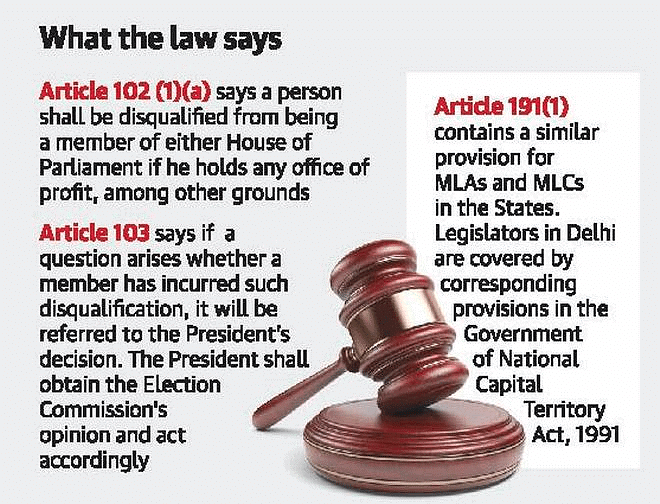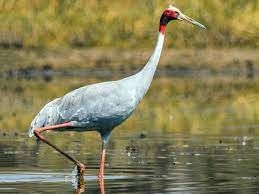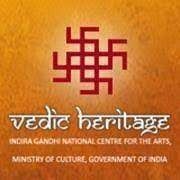UPSC Daily Current Affairs- 26th March 2023 | Current Affairs & Hindu Analysis: Daily, Weekly & Monthly PDF Download
GS-I
Coal Bed Methane

Why in News?
Recently, the Union Minister of Coal, Mines and Parliamentary Affairs spoke on the extraction of Coal Bed Methane in the Lok Sabha.
About Coal Bed Methane:-
- It is an unconventional form of natural gas.
- It is found in coal deposits or coal seams.
- It is formed during the process of coalification, the transformation of plant material into coal.
Extraction:-
- Coal Bed Methane is extracted from unconventional gas reservoirs
- Unconventional gas reservoirs are where gas is extracted directly from the rock that is the source of the gas
- For example shale in the case of shale gas and coal in the case of CBM
Process:-
- The methane is held underground within the coal and is extracted by drilling into the coal seam and removing the groundwater.
- The resulting drop in pressure causes methane to be released from the coal.
Uses of Coal Bed Methane:-
- It can be used in Power generation.
- It can be used as Compressed natural gas (CNG) auto fuel.
- It can be used as a feedstock for fertilisers.
- It can be used for Industrial uses such as cement production, rolling mills, steel plants, and methanol production.
Reserves in India:-
- The country’s coal and CBM reserves are found in around 12 states of India.
- The Gondwana sediments of eastern India hold the bulk.
- The Damodar Koel valley and Son valley are prospective areas for CBM development.
- CBM projects existing in Raniganj coalfields, the Parbatpur block in Jharia coalfield and the East and West Bokaro coalfields.
- The Son valley includes the Sonhat North and Sohagpur East and West blocks.
Source: PIB
Vedic Heritage Portal
Why in News?
Recently, the Vedic Heritage Portal created by the Indira Gandhi National Centre for the Arts was inaugurated.
About Vedic Heritage Portal:-
- The ‘Vedic Heritage Portal’ created by the Indira Gandhi National Centre for the Arts (IGNCA).
- It is a one-stop solution for common users and researchers seeking any information regarding ‘Vedic heritage.
- It gives detailed information about oral traditions, a textual traditions in form of published books/manuscripts or implements.
- It aims to communicate messages enshrined in the Vedas.
- It will help common people to have a general understanding of the Vedas.
- The audio-visual recording of four Vedas has been uploaded on the Vedic Heritage portal.
- The portal has over 18 thousand mantras of the four Vedas with a duration of over 550 hours.
About Indira Gandhi National Centre for the Arts:-
- The IGNCA comes under of Ministry of Culture.
- It was established in 1987 as an autonomous institution.
- The founder trustees of IGNCA were Shri Rajiv Gandhi, Shri R. Venkataraman, Shri P.V. Narasimha Rao, Smt. Pupul Jayakar, the Finance Minister of 1987, Shri H. Y. Sharada Prasad and Dr. Kapila Vatsyayan.
- It is a centre for research, academic pursuit, and dissemination in the field of the arts.
- The IGNCA has six functional units: –
- Kala Nidhi, the multi-form library
- Kala Kosa, devoted mainly to the study and publication of fundamental texts in Indian languages
- Janapada Sampada, engaged in lifestyle studies
- Kaladarsana, the executive unit which transforms researches and studies
- Cultural Informatics , which applies technology tools for cultural preservation and propagation
- Sutradhara, the administrative section that acts as a spine supporting and coordinating all the activities.
- 5 trees were planted during its establishment:-
- Asvattha (Ficus Religiosa), popularly known as the Bodhi tree, symbolizing enlightenment
- Nyagrodha (Ficus Bengalensis), associated with the landscaping of JANAPADA SAMPADA .
- Asoka (Saraca Indica) associated with KALANIDHI .
- Arjuna (Terminalia) associated with KALAKOSA.
- Kadamba (Anthocephallus Camba) associated with KALADARSANA
- The IGNCA has a trust (Board of Trustees), which meets regularly to give general direction about the Centre’s work.
- The Executive Committee, drawn from among the Trustees, functions under a Chairman.
Objectives:-
- to serve as a major resource centre for the arts.
- to undertake research and publication programmes of reference works, glossaries, dictionaries and encyclopaedia concerning the arts and the humanities
- to establish a tribal and folk arts division with a core collection for conducting systematic scientific studies and for live presentations.
- to provide a forum for a creative and critical dialogue through performances, exhibitions, multi-media projections, conferences, seminars and workshops between and amongst the diverse arts, traditional and cotemporary
- to promote an network with national and international institutions
- to conduct related research in the arts, humanities and culture.
About Kala Vaibhav:-
- It is a virtual museum.
- It is based on 64 arts, through which,
- Objective: to make the world more familiar with India’s architecture, painting, drama, music, and thereby the rich history of the country’s glorious culture.
SOURCE: THE HINDU
GS-II
Guillotine in Indian Legislative

Why in News?
The ongoing stalemate in Parliament has led to speculation that the government may guillotine the demands for grants and pass the Finance Bill without any discussion.
- This has led to confusion and questions about what exactly guillotine means in legislative parlance.
What is Guillotine?
- The term guillotine originally referred to an apparatus designed for executions by beheading.
- It was introduced in France during the French Revolution to make capital punishment more reliable and less painful.
- In legislative parlance, guillotine means to bunch together and fast-track the passage of financial business. It is a fairly common procedural exercise in Lok Sabha during the Budget Session.
- Once the guillotine is applied, any remaining demands for grants are put to vote without further discussion.
- This ensures that the budget is passed within the allocated time, and the government can continue its work without any delay.
What is the Guillotine Parliamentary Procedure?
- After the Budget is presented, Parliament goes into recess for about three weeks, during which time the House Standing Committees examine demands for grants for various Ministries and prepare reports.
- After Parliament reassembles, the Business Advisory Committee (BAC) draws up a schedule for discussions on the Demands for Grants.
- Sometimes, given the limitation of time, the House cannot take up the expenditure demands of all Ministries; therefore, the BAC identifies some important Ministries for discussions; ususally the Ministries of Home, Defence, External Affairs, Agriculture, Rural Development and Human Resource Development.
- Once the House is done with these debates, the Speaker applies the “guillotine”, and all outstanding demands for grants (discussed or not) and undiscussed clauses of a bill/resolution are put to vote at once in order to save time.
Source: Indian Express
Disqualification of Member of parliaments

Why in News?
Congress leader Rahul Gandhi has been disqualified from the Lok Sabha recently.
About Disqualification of Member of parliaments:-
Constitutional provisions:-
- The provision for disqualification is given in Article 102 of the Constitution.
- It specifies that a person shall be disqualified for contesting elections and being a Member of Parliament under certain conditions:
- If he holds any office of profit under the Union or state government (except that of a minister or any other office exempted by Parliament).
- If he is of unsound mind and stands so declared by a court.
- If he is an undischarged insolvent.
- If he is not a citizen of India or has voluntarily acquired the citizenship of a foreign state or is under any acknowledgement of allegiance to a foreign state
- If he is so disqualified under any law made by Parliament.
- Article 102 also authorises Parliament to make laws determining conditions of disqualifications.
- There are analogous provisions for members of state legislatures.
Defection under The Representation of the People Act, 1951:-
Disqualification on Imprisonment:
- The Representation of the People Act, 1951 provides that a person will be disqualified if convicted and sentenced to imprisonment for two years or more.
- The person is disqualified for the period of imprisonment and a further six years.
Exception for sitting members:
- They have been provided a period of three months from the date of conviction to appeal
- The disqualification will not be applicable until the appeal is decided.
About Disqualification on Ground of Defection:
- The Constitution also lays down that a person shall be disqualified from being a member of Parliament if he is so disqualified on the ground of defection under the provisions of the Tenth Schedule.
Important Supreme Court Judgements:
- Union of India (UOI) v. Association for Democratic Reforms,2002:-
- The SC held that every candidate, contesting an election to the Parliament, State Legislatures, or Municipal Corporation, has to declare their criminal records, financial records, and educational qualifications along with their nomination paper.
- Ramesh Dalal vs. Union of India,2005:
- The SC held that a sitting MP or MLA shall also be subject to disqualification from contesting elections if he is convicted and sentenced to not less than 2 years of imprisonment by a court of law.
- Lily Thomas v. Union of India,2013:
- The SC held that Section 8(4) of The Representation of the People Act, 1951 is unconstitutional which allows MPs and MLAs who are convicted to continue in office till an appeal against such conviction is disposed of.
- The court held that MP/MLA convicted for two years or above would be disqualified immediately.
- Krishnamurthy v. Sivakumar & Ors,2015:
- The SC held that disclosure of criminal antecedents (especially heinous crimes) of a candidate at the time of filing of nomination paper as mandated by law was a categorically imperative.
Source: Indian Express
GS-III
Sarus crane

Why in News?
Uttar Pradesh (U.P.) Forest Department has relocated a sarus crane, U.P. ‘s State bird, from Amethi to Raebareli’s Samaspur Bird Sanctuary.
About Sarus crane:-
- Its scientific name is Grus Antigone.
- It is the tallest flying bird in the world.
- It is the least social crane species and is mostly found in pairs or small groups of three or four.
- They are monogamous birds and pairs mate for life.
Distribution and Habitat:-
- The Sarus Crane is found in Southeast Asia, northern India, and northern Australia.
- The Indian Sarus Crane occurs in northern and central India, Terai Nepal and Pakistan.
- Once a common site in the paddy fields of Uttar Pradesh, Bihar, Rajasthan, West Bengal, Gujarat, Madhya Pradesh and Assam, the population of the Indian sarus crane is now on the decline.
- They primarily inhabit wetlands such as canals, marshes, and ponds which are suitable for their forage and nesting.
- They are sometimes found near human settlements.
- They are found in Dhanauri wetland in UP .
- It was declared as the state bird of Uttar Pradesh (UP) in 2014.
Conservation Status:-
- IUCN : Vulnerable
- CITES : Appendix II
- Wildlife (Protection) Act of 1972: Schedule IV
- It receives legal protection in India.
About Samaspur Bird Sanctuary:
- It is situated in the Rohaniya Development block of the Raebareli district, on Lucknow-Varanasi highway in UP.
- It was created in 1987 with the aim of protection and conservation of the wetland with special emphasis to the local and migratory birds, conservation of their natural habitat including aquatic plants and animals.
SOURCE: THE INDIAN EXPRESS
Directed Energy Weapons and Hypersonic Weapons

Why in News?
Recently, India’s Air Chief Marshal highlighted the need to push the development of Directed Energy Weapons (DEWs) and Hypersonic Weapons and integrate them into its airborne platforms to get the desired range and accuracy.
What are DEWs and Hypersonic Weapons?
- About:
- In layman's parlance, a directed-energy weapon damages or destroys its target using focused energy by means of lasers, microwaves or particle beams.
- Example – Microwave weapons, Lasers weapons, drone defence systems etc.
- A hypersonic weapon is one that can hit its target five to ten times (Mach 5 to Mach 10) the speed of sound.
- Advantages of DEWs over Conventional Ammunitions:
- DEWs, particularly lasers, have high precision, low cost per shot, logistical benefits and low detectability.
- They transmit lethal force at the speed of light (about 300,000 kilometers per second)
- Their beams are not affected by the constraining effects of gravity or atmospheric drag.
- Their effects can be tailored by varying the type and intensity of energy delivered against targets.
- Disadvantages:
- Limited Range: Most DEWs have limited range, and their effectiveness decreases rapidly as the distance between the target and the weapon increases
- High Cost: DEWs and hypersonic weapons can be expensive to develop and manufacture, and the cost may not be justified by their effectiveness in some situations.
- Countermeasures: DEWs can be countered by using reflective materials or other countermeasures, which can reduce their effectiveness.
- Arms Race: The development of hypersonic weapons and DEWs by one country leads to an arms race, as other countries seek to develop their own hypersonic weapons in response. This can lead to increased tensions and instability.
- Significance for India:
- The application of these technologies in the aerospace industry can transform the way wars will be fought enabling India to produce cutting edge platforms, weapons, sensors, and networks essential to fight and win a future war.
- DEWs and Hypersonic Weapons could act as a deterrent against hostile nations such as China, Pakistan by increasing India’s defence capabilities.
- Other Countries with DEWs:
- Russia, France, Germany, the United Kingdom, Israel, and China are reportedly among countries which have programmed to develop DEWs or Laser Directed Energy Weapons and militaries of several countries have also employed them.
- Earlier, US also accused Cuba of carrying out sonic attacks (Havana Syndrome)
- 1KW laser Weapon: DRDO has tested a 1KW laser weapon which hit a target 250m away.
- Directionally Unrestricted Ray-Gun Array (DURGA) II: DRDO has initiated a project DURGA II, which is a 100-kilowatt lightweight DEW.
- Hypersonic Technology Development: Hypersonic technology in India has been developed and tested by both DRDO and ISRO.
- In 2021, DRDO successfully flight-tested the Hypersonic Technology Demonstrator Vehicle (HSTDV), with the capability to travel at 6 times the speed of sound.
- India is also developing an indigenous, dual capable (conventional as well as nuclear) hypersonic cruise missile as part of its Hypersonic Technology Demonstrator Vehicle Programme.
- The concept of Atmanirbharta or self-reliance in defence should encompass evolving home-grown designs and development capabilities by utilizing the Indian defence.
- There is a need to increase investment in defence research and development to boost our defence capability.
Source: Indian Express
|
63 videos|5408 docs|1146 tests
|
FAQs on UPSC Daily Current Affairs- 26th March 2023 - Current Affairs & Hindu Analysis: Daily, Weekly & Monthly
| 1. What is the significance of GS-I, GS-II, and GS-III in the UPSC exam? |  |
| 2. How can I prepare effectively for the GS-I, GS-II, and GS-III papers in the UPSC exam? |  |
| 3. Can you suggest some good reference books for the GS-I, GS-II, and GS-III papers in the UPSC exam? |  |
| 4. How much weightage do the GS-I, GS-II, and GS-III papers carry in the UPSC exam? |  |
| 5. Are the GS-I, GS-II, and GS-III papers in the UPSC exam objective or subjective? |  |

















